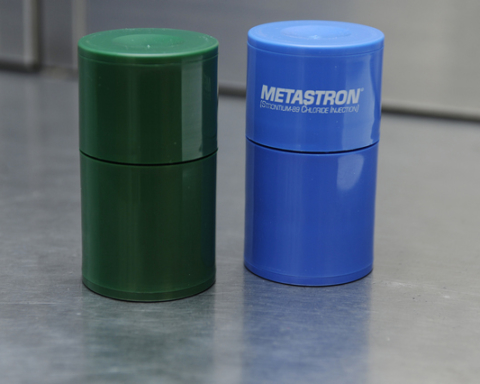A radiopharmaceutical is a radioactive pharmaceutical agent that is used for diagnostic or therapeutic procedures. For a product to be classified as a radiopharmaceutical agent safe for human use, the preparer must
satisfy the State Board of Pharmacy, the Food and Drug Administration (FDA) and the Nuclear Regulatory Commission (NRC).
[wp_ad_camp_1]
A radiopharmaceutical consists of a drug component and a radioactive component. Most radionuclides contain a component that emits gamma radiation. Substances that have varying numbers of protons and neutrons as compared to stable elements are called radionuclides. Nuclides may be stable or unstable; those that are unstable are radioactive because their nuclei undergo rearrangement while changing to a stable state, and energy is released.
Advantages of radiopharmaceutical over traditional drugs
An important distinction between radiopharmaceuticals and traditional drugs is lack of pharmacologic activity on the part of radiopharmaceuticals.
[wp_ad_camp_5]For intensive purposes, radiopharmaceuticals have been used as tracers of physiologic processes. Their huge advantage is that their radioactivity allows noninvasive external monitoring or targeted therapeutic irradiation with very little effect on the biologic processes in the body. Indeed, radiopharmaceuticals have an excellent safety record, and their incidence of adverse effects is extremely low.
However, in the past two decades, there has been committed interest to developing unsealed radionuclides for treatment of cancers arising from the diversity of newer molecular carriers (e.g., immune-derived molecules, receptor-avid tracers). Technologic advances in molecular pharmacology, combinatorial chemistry, and peptide biochemistry are providing innovative means (e.g., targeting vectors) to enhance radionuclide specificity and targeting cancerous cells in vivo.
Applications of radiopharmaceuticals
The application of radiopharmaceuticals is divided into two major areas, diagnostic and therapeutic. The diagnostic side is well established, while the therapeutic side of nuclear medicine is evolving. For example, more than 100 radiopharmaceutical products are available, with the largest proportion of these having application in cardiology (e.g., myocardial perfusion), oncology (e.g., tumor imaging and localization), and neurology (e.g., cerebral perfusion). Diagnostically, they are also used for infection imaging and in nephrology. Historically, nuclear medicine has been well established as a therapeutic modality for thyroid cancer, Graves disease, hyperthyroidism, and bone pain palliation associated with skeletal metastasis.









[…] administration of radiopharmaceuticals for site-specific use allows the physician to treat widely disseminated diseases. Optimally, […]